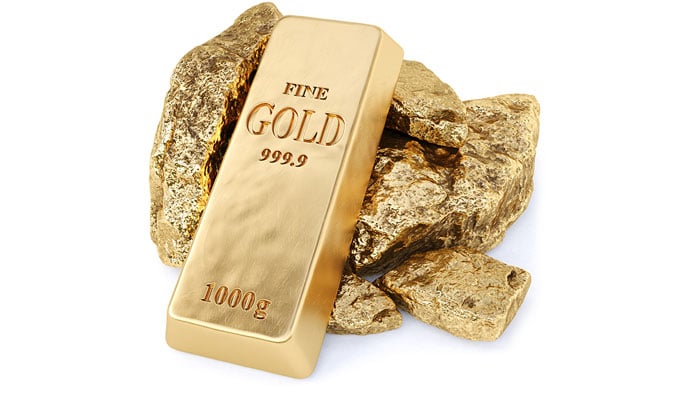For thousands of years, people all across the world have been fascinated by gold…
In some cultures, the yellow metal’s worth was purely decorative…
In others, an almost religious conviction on gold’s role as the only legitimate money.
And over the past decade, cryptocurrencies – like Bitcoin and Etherum – have been touted as a potential “digital gold.”
But for investors who are wondering about “gold” vs the new crypto “digital gold”…
Today, we’re going to take a look at the “new new” case for gold.
Why Gold (and Why Now?)
Regardless of your personal views on gold – a proven store of value or a silly shiny metal – the economic case for investing in gold is simple: there’s more demand than supply.
According to Economics 101, when demand is greater than supply, price will go up (or a substitute will be used).
While it would be naive to ignore the impact blockchain technologies have already had on today’s financial system… it would also be naive to ignore the millennia of history in the hearts, minds and (sometimes) sock drawers of hundreds of millions of people who believe in gold.
Even Warren Buffet – after decades of bashing gold – recently trimmed several of his banking positions in favor of gold mining company, Barrick Gold Corp.
Perhaps it had something to do with gold outperforming Berkshire Hathaway for the previous 20 years…
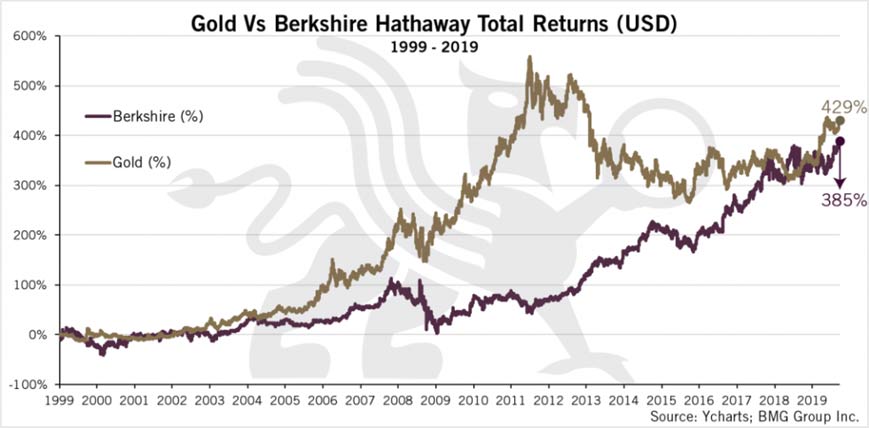
Gold quietly outperforms Buffet’s investment titan
Or perhaps the Oracle of Omaha knows something about natural resources most retail investors don’t (reflected by his $4 billion purchase of natural gas transmission and storage assets of Dominion Energy, and his recent decision to trip his position in Apple (APPL) and take a $4.1 billion stake in oil company Chevron Corp).
According to several industry experts, relative to equities, commodities haven’t been this undervalued since the 1970’s.
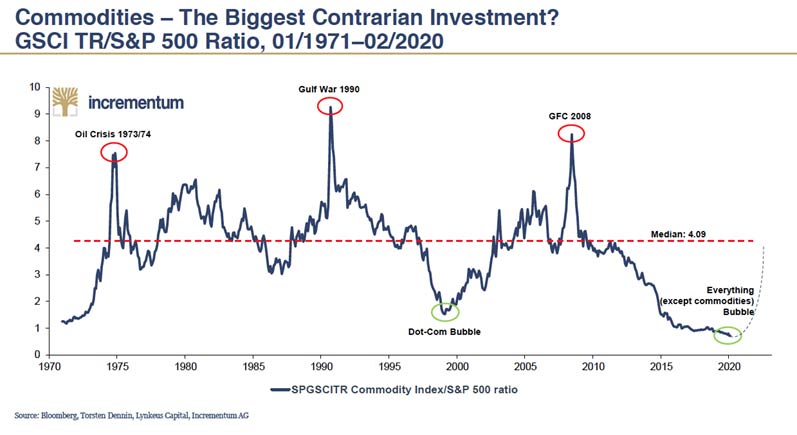
Do 50-year lows mark the dawn of a new golden age?
In a world where the stock market continues to defy common logic and fundamental analysis, these ratios could suggest a prime opportunity to consider diversifying with commodities.
But more specifically, it suggests a near “perfect storm” of converging forces that could set up gold for one of the biggest bull markets in recent history.
Here’s why…
Between the 1970s and 1990s, there was a brief ‘golden age’ of gold exploration.
For three consecutive decades, junior miners discovered at least one 50 million-ounce deposit, along with more than ten 30 million-ounce discoveries.
However, for the past 20 years, miners have failed to find a single deposit above 30 million-ounces…
And in the last three years, there have been zero gold discoveries above 2 million ounces.
Gold prices have been low for so long that to gold majors, it hasn’t been worth their while to search for new mines and veins.
Instead, they’ve focused their attention on exploiting their existing reserves to take advantage of upswings.
These upswings have been defined by three headline-grabbing bull markets in recent decades:
- The 1970s – gold spiked to $850 an ounce in January 1980 ($2800 in today’s dollars), a 24x rise over 10 years.
- The 2000s – a 12 year rally peaked with above $1,900 in September 2011, a rise of more than 650%.
- The 2010s – After crashing from 2011 highs to a 2013 low of $1180, gold hit a new all time high in 2020, breaking the $2,000 barrier for the first time ever.
And for the past several years, central banks – and the world’s wealthiest families – have been quietly stockpiling gold.
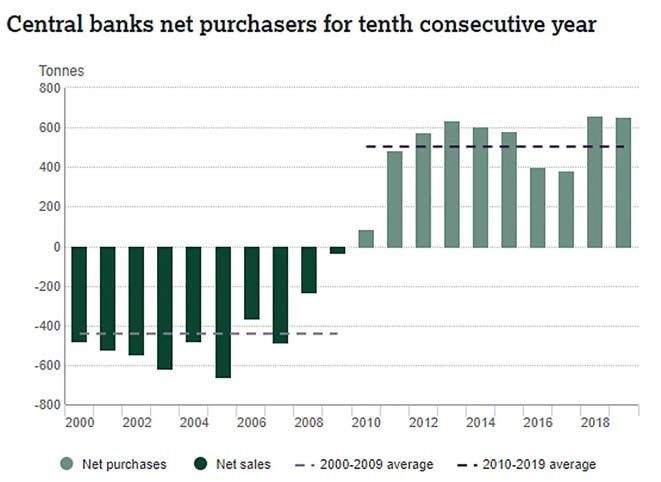
Of course, it’s up to each individual to decide if gold holds a place in their portfolio.
But if you do believe in the story of gold’s potentially explosive growth opportunity over the coming decade, the more interesting question is this…
What is the right way to get exposure to the trend?
For some, the answer is as simple as buying physical precious metals or an ETF like “GLD”.
However, for those looking for something with greater return potential, the high-risk/high-reward play has typically been with gold mining companies.
Want to learn more about the macro trends that are shaping the gold market… and how investors can get a “pure play” by investing in junior gold miners?
Sincerely,
Jake Hoffberg – Publisher
Equifund




